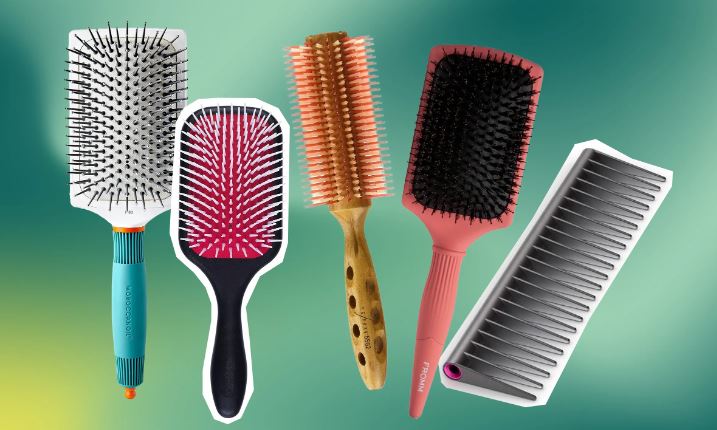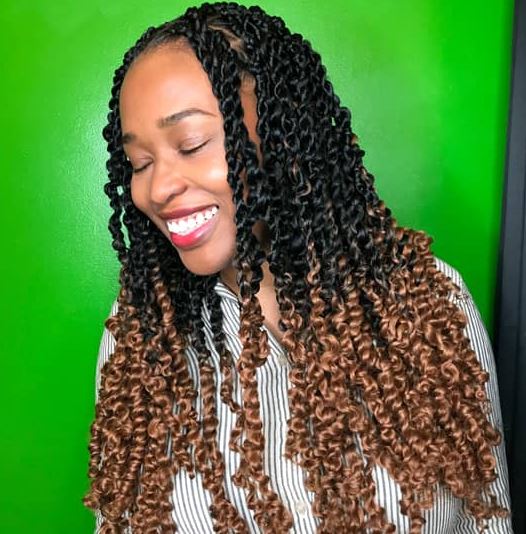Table of Contents
- 1 Introduction
- 2 Clip-In Hair Extensions: Instant Glamour
- 3 Tape-In Hair Extensions: Seamless and Effortless
- 4 Sew-In Hair Extensions: Long-Lasting Elegance
- 5 Micro-Link Hair Extensions: Natural and Discreet
- 6 Fusion Hair Extensions: Ultimate Blend
- 7 Choosing the Right Hair Type
- 8 Considering Your Lifestyle
- 9 The Maintenance Factor
- 10 Color, Texture, and Style
- 11 Pros and Cons of Each Type
- 12 Frequently Asked Questions (FAQs)
- 13 Conclusion
Are you dreaming of luscious locks that add volume, length, and style to your hair effortlessly?
Hair extensions have become a popular solution for achieving the hair of your dreams without waiting for your natural hair to grow.
With various options available, it’s essential to understand the best type of hair extensions that suit your preferences, hair type, and lifestyle.

Introduction
If you’ve ever wished for a sudden transformation, hair extensions could be the answer. They come in a variety of types, each with its own set of benefits and considerations.
Here, we’ll delve into the world of hair extensions and help you determine the best type for you.
Clip-In Hair Extensions: Instant Glamour
Clip-in hair extensions are a go-to choice for those who want versatility without a long-term commitment.
With clips attached to wefts of hair, these extensions can be easily added or removed at your convenience. They’re great for special occasions or when you want a quick style change.
Tape-In Hair Extensions: Seamless and Effortless
Looking for a more semi-permanent solution? Tape-in hair extensions are applied close to the scalp using adhesive tape.
They blend seamlessly with your natural hair, and maintenance is relatively hassle-free. These extensions are perfect for individuals seeking a longer-lasting option.
Sew-In Hair Extensions: Long-Lasting Elegance
Sew-in hair extensions, also known as weaves, involve braiding your natural hair and sewing the extensions onto the braids.
They provide a natural look and can last for several weeks. This method is popular among individuals with coarse or curly hair.
Micro-Link Hair Extensions: Natural and Discreet
For those desiring a discreet approach, micro-link hair extensions might be the best choice.
These extensions are attached strand by strand using small metal beads. They move naturally with your hair and require minimal heat or chemicals during application.
Fusion Hair Extensions: Ultimate Blend
Fusion hair extensions offer a seamless blend as they’re attached strand by strand using a keratin bonding agent.
They provide a natural look and feel, and with proper care, they can last for months. However, the application can be time-consuming and should be done by a professional.
Choosing the Right Hair Type
When selecting hair extensions, consider the hair type that matches your natural hair. Whether it’s straight, wavy, curly, or kinky, choosing a compatible hair type ensures a cohesive and natural appearance.
Considering Your Lifestyle
Think about your daily routine. Are you active? Do you swim often? Certain extensions might require more care and attention, so it’s crucial to choose a type that fits seamlessly into your lifestyle.
The Maintenance Factor
Different extensions come with varying maintenance requirements. Some need more attention than others. Be prepared to follow maintenance guidelines to keep your extensions looking their best.
Color, Texture, and Style
Extensions should complement your natural hair in terms of color, texture, and style. Opt for extensions that match your hair’s attributes for a harmonious blend.
Pros and Cons of Each Type
Each type of hair extension has its advantages and disadvantages. Understanding these will help you make an informed decision that aligns with your preferences and priorities.
Frequently Asked Questions (FAQs)
Q1: Are hair extensions damaging to natural hair?
A1: When properly applied and cared for, hair extensions shouldn’t cause significant damage to your natural hair. However, improper installation, excessive tension, or neglected maintenance can lead to damage over time. It’s crucial to follow the manufacturer’s guidelines and consult with a professional to ensure proper application and care.
Q2: Can I style hair extensions with heat tools?
A2: Yes, you can style most hair extensions with heat tools, but it’s essential to use heat-protectant products and set the tools to a moderate temperature. Just like with natural hair, excessive heat can cause damage and dryness, so it’s best to avoid frequent and intense heat styling to maintain the longevity of your extensions.
Q3: How long can I keep fusion hair extensions?
A3: Fusion hair extensions can typically be kept in for around 3 to 6 months. However, the exact duration depends on factors such as your hair’s growth rate, the quality of the extensions, and how well you maintain them. If you’re looking for a longer-lasting solution, fusion extensions might be a suitable choice, but it’s important to follow the maintenance recommendations.
Q4: Will others be able to tell I’m wearing hair extensions?
A4: When properly applied and matched to your natural hair, quality hair extensions should blend seamlessly and appear natural. With techniques like tape-in or micro-link extensions, the attachments are discreet, making it difficult for others to tell you’re wearing extensions. Choosing the right color, texture, and application method contributes to a natural look.
Q5: Can I dye my hair extensions to match my color?
A5: In most cases, hair extensions can be dyed to match your natural color. However, it’s recommended to have a professional stylist dye the extensions to ensure the best results. Keep in mind that repeated coloring and chemical treatments can affect the quality and lifespan of the extensions, so it’s advisable to choose the closest color match to your natural hair initially.
Conclusion
Choosing the best type of hair extensions boils down to your individual preferences, lifestyle, and desired look.
With the array of options available, you can achieve the hair transformation you’ve always wanted. Remember to consider factors like maintenance, compatibility, and ease of use before making your decision.




